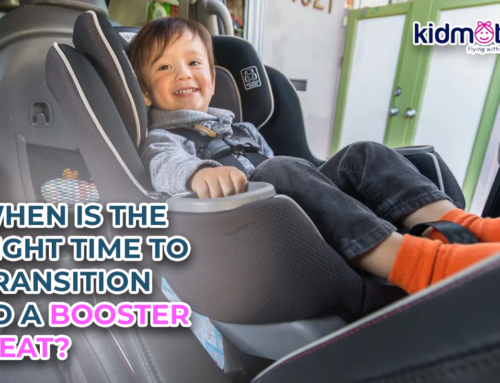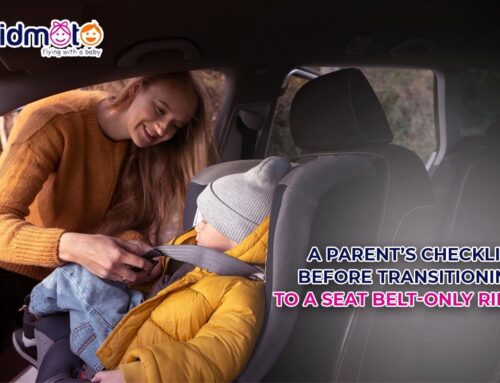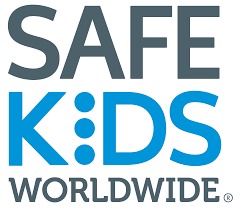High-Back vs. Backless Booster: Which type is right for my child?
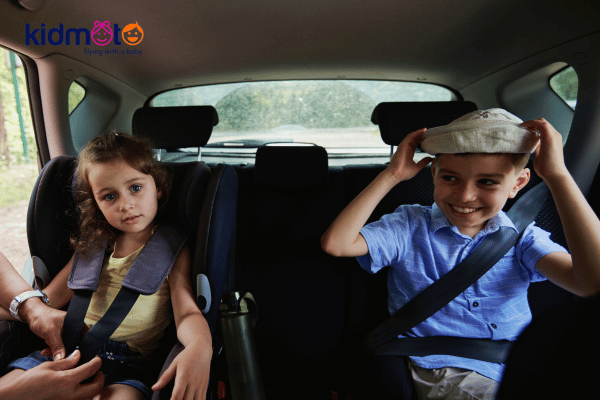
Reaching milestones is a part of growing up, and one such milestone your child may undergo now is transitioning from a car seat to a booster seat. This change signifies that your child is growing, becoming more independent, and ready for the next stage in their journey.
Once you’ve figured out that your child is ready to switch to a booster seat, you may feel overwhelmed by the variety of options available. Now, you’re probably wondering which type to pick and the safety considerations that come with it.
In this blog post, we’ll guide you through choosing the right booster seat for your child, providing insights on different types and helpful tips to make this transition smooth and secure. So buckle up, and let’s explore the pros and cons of each kind!
What are the booster seats?
There are two main booster seats: high-back booster seats and backless booster seats.
High-back booster seats have a tall backrest and side wings for extra support and protection for your child’s head, neck, and body. Meanwhile, backless booster seats have a simple design, as it is mainly a cushioned base to ensure the car’s seat belt fits right.
Like any car seat, the ideal booster seat fits your child perfectly and ensures they are safely secured. It must be compatible with your vehicle. Let’s explore the booster seats to help you determine the right one for your child.
Backless Booster Seats
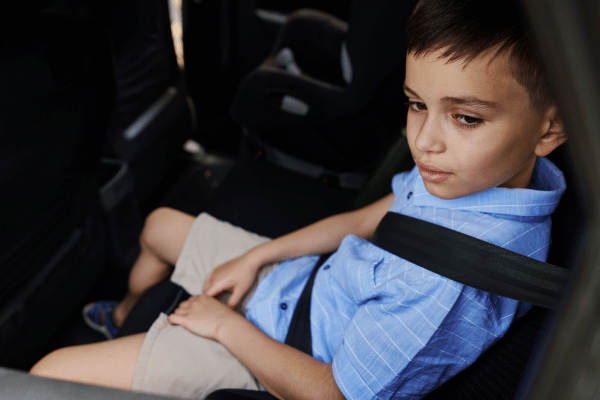
The backless booster seat is the “traditional” booster seat. It’s a cushion that elevates your child to ensure a better seat belt position. Some backless boosters can be attached to the vehicle using the LATCH system, while others rest on the seat.
If you choose a backless booster seat, your child’s ears must align with the top of your vehicle’s seatback for proper head and neck protection. Remember, only use a backless booster seat in a car with headrests.
There are a couple of advantages to using backless boosters. First, older children often prefer them as they may find high-back boosters and seats with harnesses to be more “babyish.” Next, they are lightweight, compact, and affordable. These parts make them suitable for families with smaller vehicles, multiple children in car seats, or those who often switch car seats between vehicles.
But backless booster seats have a few drawbacks. They lack side-impact protection, leaving the head, neck, and torso more vulnerable in a side collision. They also don’t provide built-in headrests, vital for younger children who need proper head and neck support.
Additionally, the suitability of backless boosters depends on a child’s age and maturity. Older children who can sit comfortably without the extra headrest may prefer backless boosters, but younger children may still require the added support and protection of high-back booster seats.
| Pros | Cons |
|
|
High-Back Booster Seats
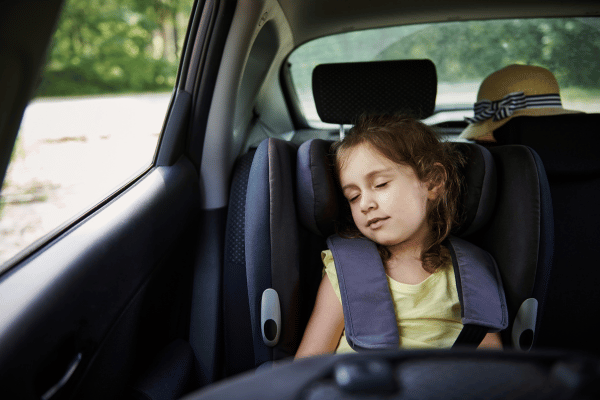
High-back booster seats have extra safety features like side bolsters or “wings” that absorb impact and cover the head, neck, and sometimes the sides. They also have seat belt guides to correctly position seatbelts across the chest, shoulder, and hips. Most high-back boosters are compatible with LATCH, so you can securely attach them to your vehicle.
Crash tests have shown that correctly installed high-back booster seats provide good protection in side-impact accidents, reducing the risk of whiplash and other injuries when used correctly. So, they’re a better choice for younger children who need a booster seat for the proper seat belt positioning and extra head support.
Overall, high-back boosters offer advantages that backless boosters do not. Often, they come as a combined seat, letting you save money since you can transition to a backless one without shelling out more bucks. These models are excellent for travel, storage, and older children who no longer need extra head protection. The initial costs may be higher, though.
| Pros | Cons |
|
|
How to Determine if Your Child is Ready for a High-Back or Backless Booster Seat
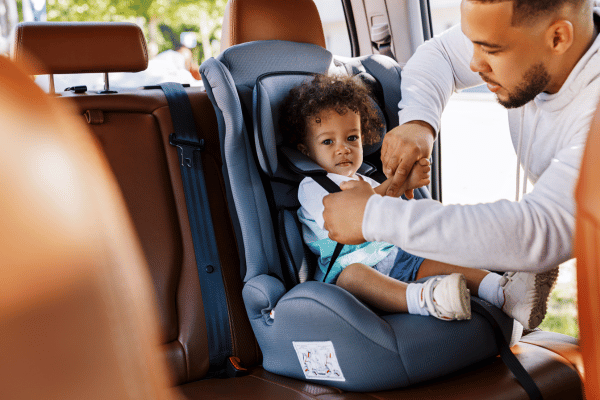
Determining if your child is ready for a high-back or backless booster seat involves considering a few crucial factors.
According to US Law, children who have outgrown their car seats but remain under 4 feet 9 inches in height and between 40 to 80 lbs. must use booster seats. These laws may vary by state, though. Also, these requirements are only one way to determine whether your child is ready to transition from a forward-facing car seat to a booster seat.
For example, your child may already reach the required height and weight, yet they are not developmentally ready to transition – as with young children who are taller and heavier.
You must use a high-back booster seat before moving on to a backless one.
Here are guidelines to help you decide whether you should get a high-back or backless booster seat for your child:
- Height: Consider your child’s size. Your child’s shoulders should be below the highest harness slots for a high-back booster seat. For a backless booster seat, their ears should reach the top of the vehicle seat.
- Maturity and Behavior: Evaluate your child’s ability to sit correctly in a booster seat. They should be able to sit upright, maintain proper seat belt positioning across their shoulder and lap, and not slouch or lean out.
- Comfort and Support: Assess whether your child needs more head and neck support. High-back booster seats provide added protection and help children requiring head support. Backless booster seats are suitable for children who can sit comfortably without the added headrest.
- Vehicle Compatibility: Consider the vehicle you have. Some cars have low seatbacks, making high-back boosters better for proper head and neck support. Additionally, make sure your car has headrests for backless booster seats.
Remember: Always consult the manufacturer’s instructions and guidelines for specific information about the booster seat you are considering. Focusing on your child’s safety and comfort is crucial when determining the proper booster seat for their readiness.
When to Move from a High-Back Booster to a Backless Booster
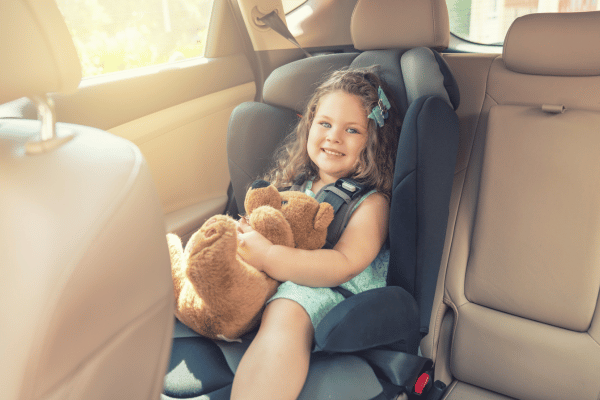
If you first chose a high-back booster after using a forward-facing car seat, consider transitioning to a backless booster seat when your child begins school. They may feel too grown-up for a “car seat,” but they’re often still not tall or mature enough for a seatbelt.
The safest option is to keep your child in a harnessed booster seat for a long time. However, how do you know when your child is old enough and developmentally ready to make the switch?
Here are some things that will help you determine whether your child is ready for a backless booster:
|
Regardless of age or state laws, your child should meet these milestones. Sometimes, state laws may require a transition too early, which might not ensure all children are safely secured based on age, size, and maturity.
There is no need to hurry when transitioning your child from one car seat to another. The decision to switch should depend on your child’s size, development, and if they have outgrown their current seat’s height and weight limit.
Remember, your child’s safety and comfort take priority when traveling. And no matter which booster seat you choose, ensure your little ones are secure in their car seats by harnessing them properly.
Book Kidmoto Now!
Book Kidmoto for a safe and comfortable ride for your child! With Kidmoto, you can choose the car seat for your child. You can even choose whether you need a backless or high-back booster seat to ensure the perfect fit and your little one’s safety while traveling.
Download the Kidmoto app from the App Store or Google Play Store now. With a few taps, you can book a ride and enjoy peace of mind knowing your child is securely seated throughout the journey!

